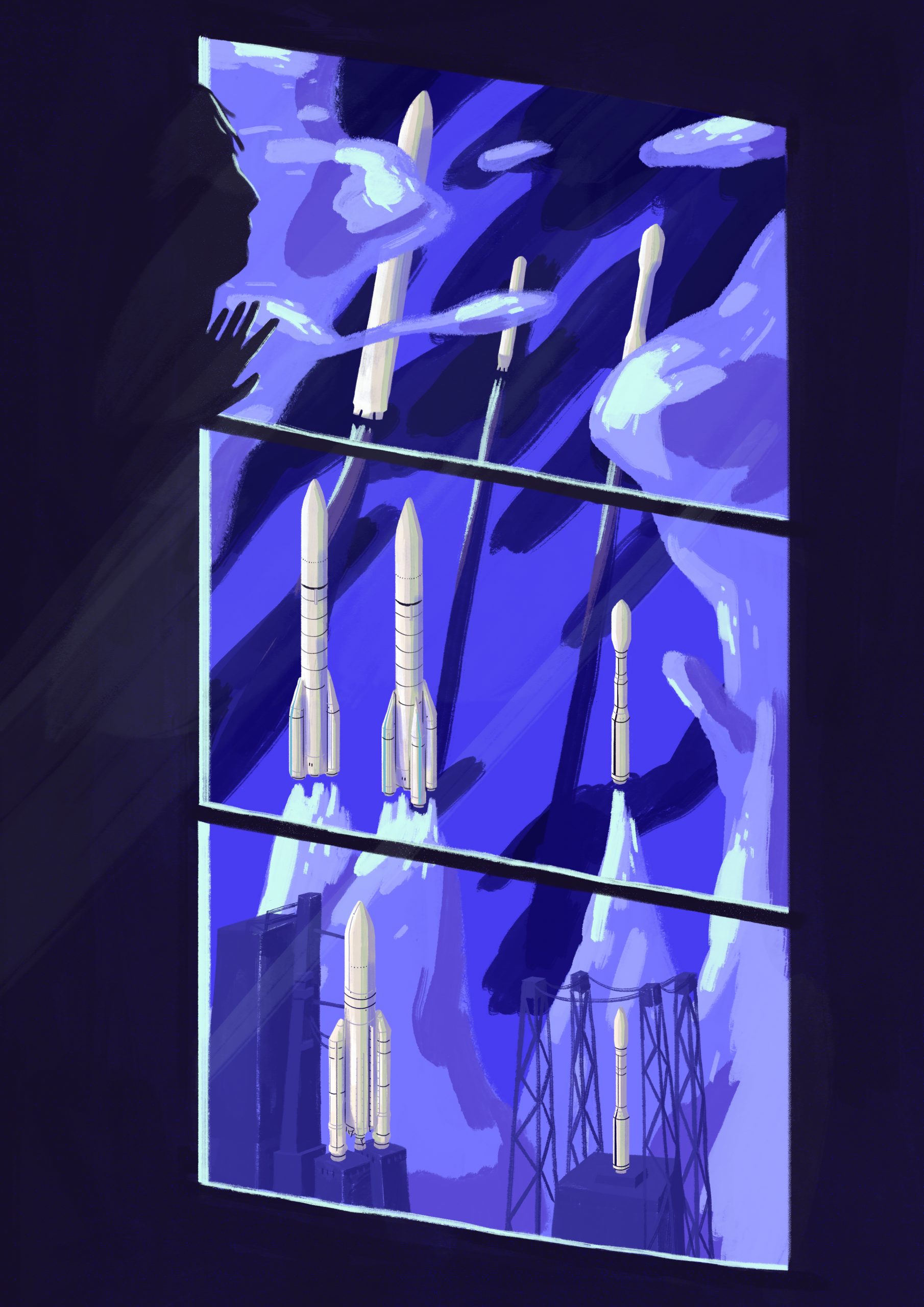07.07.2021
Creating the best ways to space
Access to space is the enabler of Europe’s space activities and freedom of action in space, but is facing destabilising external challenges. Successful maiden flights of Vega-C and Ariane 6 and their transition into exploitation are an absolute priority, while institutional funding needs must be kept under control. In Agenda 2025, ESA commits to proposing […]

Access to space is the enabler of Europe’s space activities and freedom of action in space, but is facing destabilising external challenges. Successful maiden flights of Vega-C and Ariane 6 and their transition into exploitation are an absolute priority, while institutional funding needs must be kept under control.
In Agenda 2025, ESA commits to proposing rapid advancements in technological innovation and encouraging new industrial actors and customers as well as creating and capturing new demand. ESA will work with Member States, the European Commission and industry to establish a way forward for space transportation, with concrete programme elements proposed for the 2022 Council at Ministerial Level.
“There are many applications of space that are serving everyday life as well as the more inspirational parts of exploration. All of these need a very competitive launcher programme,” said ESA Director General Josef Aschbacher “and I really would like to have a debate in Europe through this mechanism of Agenda 2025 and the Space Summit to see where Europe wants to be and what Europe wants to do – and launchers and maybe even launchers that go a bit further including human-rated launchers are at the core of this discussion. First is Ariane 6 and Vega-C but we are thinking even beyond that to what comes after that and what will be available in the 2030s.”
With eyes firmly on the future, ESA signed contracts as part of the New European Space Transportation Solutions (NESTS) initiative for research to be delivered on long-term trends and potential evolutions.
ESA Director of Space Transportation Daniel Neuenschwander said: “Ariane 6 and Vega-C are our top priorities right now; these two launch systems serve our basic strategic needs in Europe. But on top of that, we are also looking for growth.
“In these studies, we had selected three consortiums that proposed their services. We had given the two primes who are developing our ESA launch systems a contract [ArianeGroup and Avio] but also we also selected Rocket Factory Augsburg based on an invitation to tender, meaning an open competition, and this is really the spirit of what’s coming next.
“Without prejudging the full development plans they have to deliver to us it’s interesting to see that the views on the potential solutions are rather converging – on the fact that we should develop a launcher family in Europe which can have different products which can go from a micro-launcher to a heavy lift launcher; this will depend a lot on the ambition that Europe will define on this point. They all speak about one family of launcher with common technology building blocks, which should develop this family in an incremental approach. It’s also worth knowing that all of them have insisted on the need of a reusable solution and it’s even considered mandatory to have common blocks of propulsion; it’s considered mandatory to have reusability; it’s considered mandatory to be modular. There is a strong focus if you look to the worldwide sector on lox methane, and also in the responses from the consortia we had this was clearly seen as a key point.”
The studies commissioned by ESA will be considered along with other ideas in preparation of the next Council at Ministerial Level.
“To underline the need to really think out of the box and to think also to other passes beyond the current landscape. I have launched a question internally – can we not build a carbon neutral European launcher?,” asks Daniel Nueunschwander, “which would really follow the two main objectives of economic growth and of the green deal – it of course has to prove the result in terms of performance but more important must confirm its economic balance, that it is a competitive solution. I don’t know if the requirements will be matched, but we have to study it and this is the mindset in which we will work over the next few months.
“Human-rated transport is also a key point. Do we in Europe have this ambition? And this is certainly one of the potential flagship topics to be addressed at the Space Summit 2022. The Director General has tasked us to come up with a number of ideas and we will certainly also address this spectrum in view of the summit of ’22.”
The new approaches join the cornerstones of space transportation already in place and in development:
- Ariane 6 and Vega-C
- SpaceRider, a reusable multi-purpose vehicle
- disruptive technology building blocks and the Future Launchers Preparatory Programme
- Boost! – ESA’s commercial space transportation services and support programme
“We need to fulfil two roles,” said Josef Aschbacher. “On one side we have to guarantee an institutional autonomous access to space and this we will do. At the same time, we are coming into the more innovative creative part to really create competition in Europe and make the established players rethink their models and make them even more competitive.”